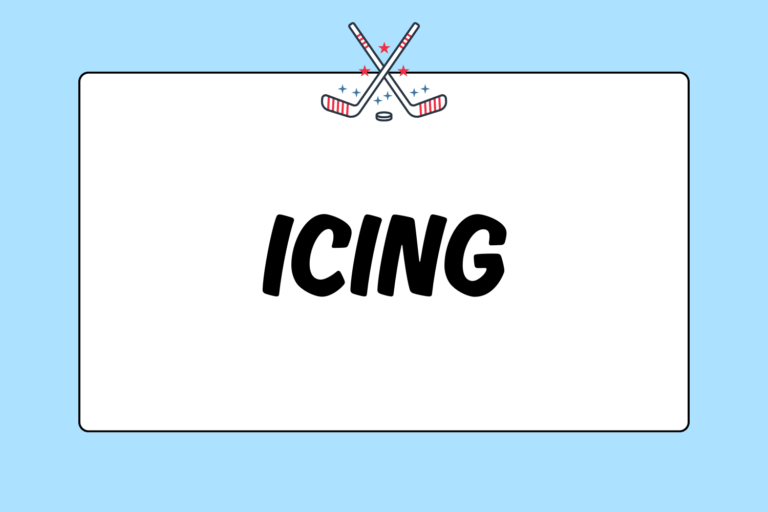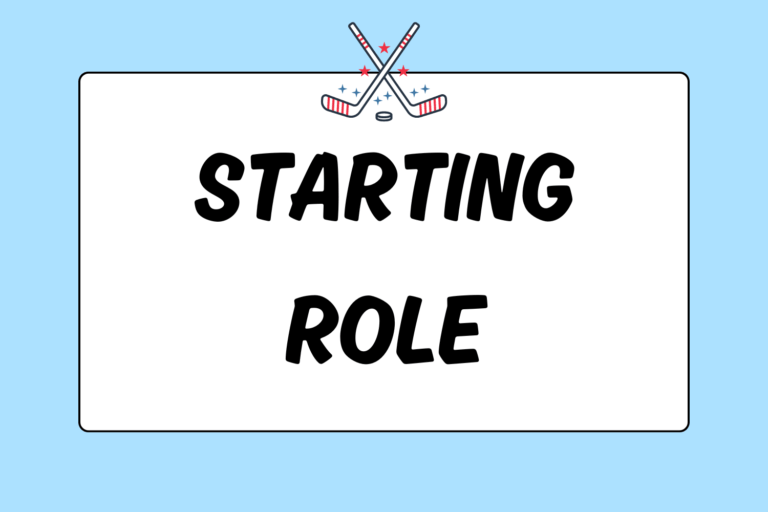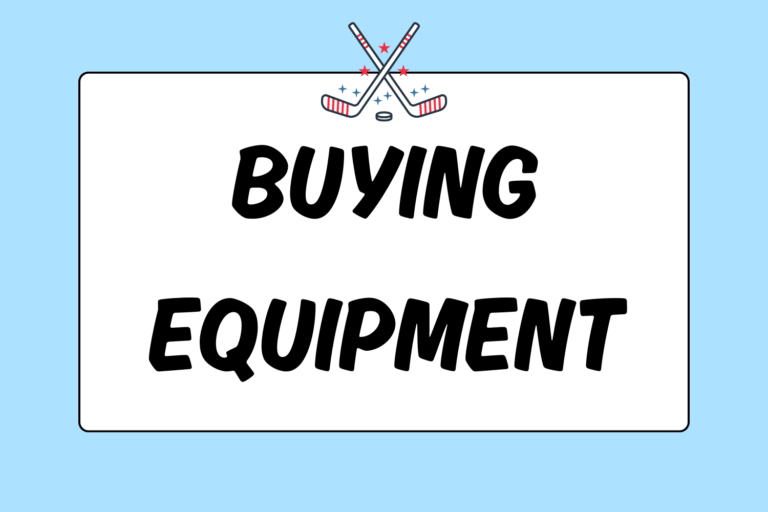Ice hockey has more equipment than any other team sport. From skates to sticks, helmets to pants, there is a lot of stuff to remember. No ice hockey position is more equipment intense than goaltender. The whole process of getting dressed can be quite complicated for beginners. Here, we’ll take a look at the order gear should go on, and offer some tips and tricks for getting suited up quickly.
Underwear
The degree of clothing goalies wear under their gear varies on a case-to-case basis, and often is based on personal preference. Undergarments will make your gear retain less water. In turn, they will help your equipment dry faster. Most leagues don’t have requirements with underwear, so you have full rein on what you wear. Do what’s most comfortable for you. However, the following setup is recommended:
- Briefs: Wearing briefs will prolong the life of your jock and help it dry out faster. Briefs are preferable to boxer shorts because of the extra support and the fact that they won’t bunch up.
- Socks: Some goalies wear socks, some don’t. It all depends on the fit of your skate. If you do choose to wear socks, thin cotton is recommended. Thick socks take away some of the “feel” of skates.
- Compression tights or nylon track pants: Wearing some sort of leggings will prevent your pad straps from irritating your legs.
- Knee pads: If you choose to wear free-floating knee pads (optional), you should put them on over your compression tights. Knee pads without compression pants under them are often uncomfortable.
- Compression shirt or cotton t-shirt: Wearing a shirt under your chest protector will prevent it from pinching you. Most goalies prefer short-sleeved shirts; long sleeves bunch up and sleeveless shirts still allow your chest protector to pinch under your arms.
Lower-Body Gear
Your lower-body gear is pretty straight forward. The key to putting it all on is twofold: How loose/tight you put the gear on, and more importantly, that you do it in the correct order.
- First come the jock and garter. Make sure it’s snug and all the straps are in working order.
- Next come the hockey stocks – if you choose to wear them. Wearing a layer between your pads and your legs helps prevent strap irritation, but many goalies choose compression pants instead of hockey socks. Also know that certain leagues require goalies to wear hockey socks. Attach them to the garter straps by putting the plastic end on one side of the sock and the metal eyelet on the other. Cover the plastic knob with the sock material, then force it through the eyelet on the other side.
- Now it’s time to put on your goalie pants. Don’t worry about tightening the pants yet.
- Lace up those skates! You shouldn’t tie them nearly as tightly as players do. Make sure your foot is secured, but feel free to tie them looser than your teammates would.
Leg Pads
In addition to being the most expensive piece of hockey equipment, leg pads are also one of the most customizable in the way they are put on. Even with the most basic, introductory pads, you’ve got a large combination of ways to strap them. That said, there are still some rules of thumb to consider:
Toe Laces
Toe laces, the pair of strings that attach to the front of the lowest parts of goalie pads, can be one of the most confusing parts of equipment to properly secure. They are complicated further by the fact that there are three different types. Regardless of which type your pads have, they are the first part you should strap into. The types of toe laces are:
- Traditional: These are just two dangling laces. They are laced through the holes in your cowlings, and then tied over the top of your skate laces. It’s imperative that they are not tied too tight, as this will prevent your pads from properly rotating and sometimes keep your skates from being able to catch an edge.
- Sliding toe bridges: Similar to traditional goalie toe laces in the way you attach them, but they to slide from side-to-side at the point where they connect to the pad. These can be tied tightly.
- FlexToe: This toe-tie system (and similar ones) was designed so that you don’t need to tie anything. Merely snap a clip that is attached to your skate to a piece that is attached to the pads. They save you time getting dressed, but installation can be difficult. Make sure the manufacturer’s directions are followed carefully.
Straps
There are three pad-strap materials currently being manufactured. Most leg pads utilize a combination of two types, but some even use all three! The types are:
- Leather: The benefits of leather straps is that they have a nice feel, are less likely to scratch or bruise your legs, and the metal buckles are nearly unbreakable. The downsides are that they stretch out and deteriorate over time, and that they take the longest to put on.
- Nylon: The benefit of nylon straps is that they are quick to put on and the straps are extremely durable. The downsides are that they sometimes bite into your legs and the hard-plastic snap buckles aren’t as durable as metal. Furthermore, the fit sometimes adjusts while playing, and may need attention during games.
- Elastics: Most pads have elastic straps with Velcro connectors to control the fit of your leg into the pad. If attached properly, these rarely show any signs of wear.
Putting the Pads On
Once you have your toe laces attached on both skates, lay your pads face down in front of you and kneel in them. The first thing you should attach is the elastic/Velcro calf strap – if your pads have them. This part is called the calf cradle. Attach it snug, but not tight. Try not to stretch the elastic bands at all when connecting.
Next, start with the lowest strap on your pads. This is called the boot strap. It goes through the hole in the cowling under your skate. It should be connected rather tightly. Some pads have two boot straps. From there, start working your way up the series of straps. The next one, the lowest of the group called “calf straps,” should be rather tight, as well. However, as you get higher on the pads, your straps should be attached looser and looser.
Once you’ve connected the straps up to just below your knee, you have two options. Some goalies continue to strap their pads up while kneeling down, while others continue to do so while sitting on a bench. It’s your call; do whatever is more comfortable.
If your pads have another elastic/Velcro strap around the knee, now is the time to connect it. Again, it should be snug, but not tight. Continue connecting your straps from low to high, and know that each one should be looser than the one before it. Many goalies attach the thigh strap (the highest one) as loosely as it will allow. Some goalies even go as far as to cut it off.
For butterfly goalies, it’s very important that the straps at the bottom are tight, and the straps at the top are loose. This allows the pad to rotate between standing and butterflying, so that the front of the pad is always facing outward.
Upper-Body Gear
Next, put on the chest protector. Every strap should be snug, but not tight. Make sure your elbows rest properly in the hard-plastic elbow caps. How this piece of equipment fits is crucial, as it’s protecting a lot of important stuff … your insides! That said, there aren’t many variations of putting it on. If you choose to tuck your chest protector into your pants, go for it. If your pants tie to your chest protector, now’s the time to do that; likewise if your pants have suspenders.
After your chest protector goes on, put on your jersey. If any part is snagged on your chest piece, ask a teammate to help you out. Helmets rarely have anything that needs to be adjusted, but now’s a good time to ensure that everything is in working order. Do a quick check to make sure none of your mask’s straps or buckles are broken.
Hit the Ice
From here, take your gloves, blocker, stick, and helmet and head out to the ice. Most goalies choose to put on and adjust these remaining pieces of equipment while on the ice, as navigating through the locker room and rink with them on can be cumbersome. Just make sure that your gloves and helmet are snug and secure, and that there are no dents in the cage of your mask. Never play with a dented mask! Dents cause weak points in the welds that connect cage wires. Another shot to a dented cage could bend the wires in towards your face.
Game Time
Now you should be all set and ready to play. Use your time in warm-ups to adjust anything that doesn’t feel perfect. If something doesn’t feel right during the game, use play stoppages to tweak things. If something breaks or a strap comes off, get the referee’s attention immediately and he will give you a brief time out to repair your gear. After all, the purpose of all this gear is protection. Stopping the puck is secondary to safety. That said, get out there and stop that puck!





